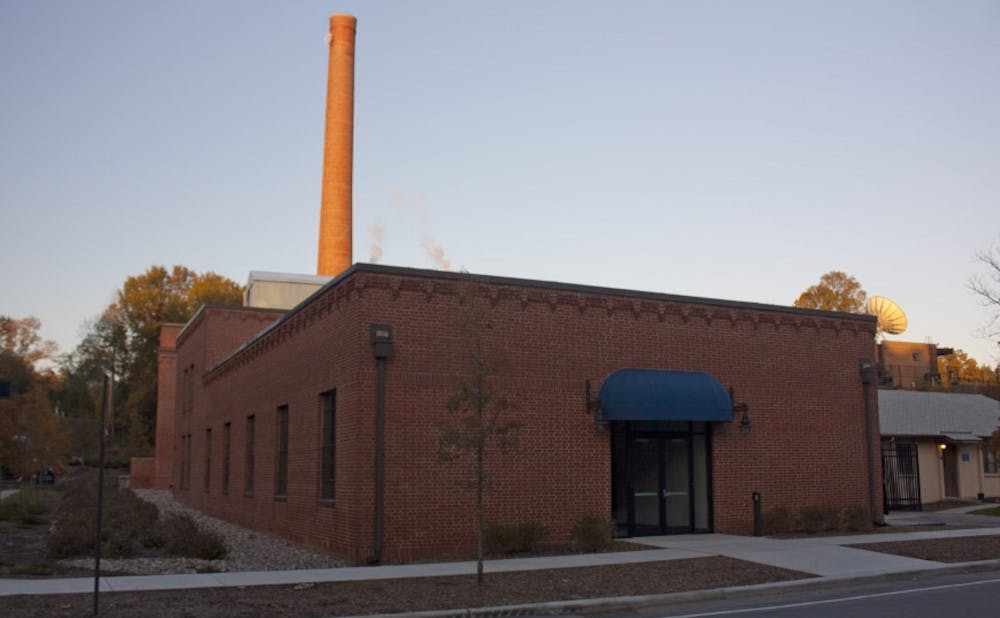Stacks of 16mm film canisters—each painstakingly labeled with duct tape and Sharpie—tower over a pair of enormous iMac monitors and a man who seems acutely aware of the comical contrast in technologies. That man is Joshua Gibson, associate professor in the department of Art, Art History & Visual Studies, and his office encapsulates the conflict between the ubiquity of digital technologies and the nostalgic return of analog devices, a conflict Gibson himself plans to address in his upcoming symposium “Material Desire in the Digital Age.”
“This whole thing started as a movement,” Gibson explained, tracing inspiration for the symposium back to the Franklin Humanities Institute, where the term “digital humanities” first gained traction.
Now that so many fields of study have been revolutionized by the decade’s massive strides in technology, the question has emerged of whether there is still a longing for material things.
“Artists are making a choice to work with older technologies,” Gibson said. “One of the speakers at the symposium…makes robots using mud and sticks.”
The symposium is more than just a simple debate about the virtues of these disparate technologies. It is an exploration of the reconciliation of old and new, of permanence and evanescence. Gibson recalled witnessing the abrupt transition from analog to digital and how it shaped his perspective on using analog materials—which encompass everything from celluloid to record players.
“I went from using celluloid as an undergrad to digital computers in grad school.… When my son was born, I took pictures and videos on my phone…then I wondered, ‘Will he ever see these?’” Gibson said of his decision to start filming his son’s childhood on 16mm film. It’s a choice that reflects a common fear among creators and artists: Will their work survive if it is not physically archived?
Automation and virtual annals have replaced the clunky gear of yesteryear, but this shift has prompted a conversation about preservation in the field of humanities. Obsolescence is a major concern: if the technology used to store important documents and works is suddenly outdated, will there be any way to access it? Some artists are returning to the archaic forms of their mediums not just out of nostalgia or aesthetic appeal, but in order to imbue their work with a permanence that the current technological state does not allow.
The goal of the symposium is to address these decisions, as well as foster a dialogue on how these choices will impact the future of creation and curation and how the past can still play an integral role in modern art. These conversations will be led by professionals from a variety of backgrounds, including Tom Whiteside, whose work focuses on the use of film projectors to create a more unique viewing experience and will be presented on the first night of the symposium. Whiteside’s oeuvre reflects the struggles of artists to return to the base element of their work in a world where technology has made creative execution deceptively simple. He will contribute a new dimension of thought to the discussion.
Work that incorporates the analog—such as Whiteside’s—has seen a recent surge in popularity as audiences who are overwhelmed by the rapid developments in technology experience nostalgia for the relics that have since been replaced by shinier, speedier hardware. People have a deep appreciation for media that can be held, that can be materialized, that can be given. As convenient as it is to download a musician’s entire library onto one’s phone, nothing compares to the pride of owning a CD or vinyl record. The desire to own the material good has survived in spite of the deluge of digital books, streaming movies and virtual artwork. Analog still holds a stake in the mainstream, a stake that is expected to grow as the escalation of obsolescence and automation kindles feelings of nostalgia and dissatisfaction in audiences.
“It’s a project that has self-importance,” Gibson said when asked what he hopes to gain from the symposium. “I want to understand why I enjoy this process.”
He invites both graduate and undergraduate students to attend, hoping to gain some insight into the issue from the youth who hold the most influence over which forms of creation will dominate art and academia in the coming years. And, hopefully, they will turn away from their screens for a night to glean the importance of the analog technology that preceded their iPhones and MacBooks.
“We have to understand original technologies to understand digital,” Gibson explained. “We’re emulating this other language and we have to understand it in order to understand everything that comes after.”
“Material Desire in the Digital Age” will be held Sept. 7 and 8 at the MFA Carpentry Shop, located on the corner of Maxwell Ave. and Campus Dr.
Get The Chronicle straight to your inbox
Signup for our weekly newsletter. Cancel at any time.

